Core Zones
Kachida Valley – The Hidden Gem of Ranthambore National Park

Kachida Valley, located in the outer fringes of Ranthambore National Park, Rajasthan, is a lesser-explored yet picturesque zone known for its serene landscapes and diverse wildlife. Surrounded by lush green hills and rocky outcrops, it offers a unique wilderness experience away from the bustling safari routes.
Geography and Landscape 🌿
- Characterized by rugged terrain, dense forests, and small water bodies.
- Offers stunning panoramic views of Ranthambore’s landscape.
- Home to natural caves and rock formations, providing shelter to leopards and other predators.
- Less crowded safari experience, perfect for nature lovers and wildlife photographers.
Wildlife in Kachida Valley 🐾
Kachida Valley is renowned for its high leopard population, making it a prime spot for spotting elusive predators. Other key wildlife species include:
- Leopards – Frequently sighted near rocky caves and cliffs.
- Sloth Bears – Often seen searching for honey and termites.
- Tigers – Though rare, occasional sightings occur in this zone.
- Wild Boars, Hyenas & Jackals – Commonly found scavenging around the valley.
- Spotted Deer, Sambar Deer & Nilgai – Abundant prey base for predators.
Birdlife in Kachida Valley 🦜
With its varied ecosystem, Kachida Valley is home to several exotic bird species, making it a paradise for birdwatchers:
- Crested Serpent Eagle & Indian Eagle-Owl – Frequently seen perched on rocky outcrops.
- Peafowls, Parakeets & Woodpeckers – Adding vibrant colors to the valley.
- Kingfishers, Bee-eaters & Drongos – Found near small water bodies.
- Vultures & Kites – Often seen soaring high in search of prey.
Safari Experience in Kachida Valley 🚙
- Morning Safari: 6:30 AM – 10:30 AM
- Evening Safari: 2:30 PM – 6:30 PM
Best Time to Visit Kachida Valley 📅
- Summer (March – June): Best for leopard sightings near rocky outcrops.
- Winter (November – February): Pleasant weather for safaris and birdwatching.
- Monsoon (July – September): Closed for safaris due to heavy rains and conservation efforts.
Accommodation and Activities Near Kachida Valley 🏕️
Kachida Valley offers a variety of accommodation options for visitors:
- Luxury Resorts & Jungle Lodges – Premium stays with scenic views.
- Forest Rest Houses & Eco-Lodges – Ideal for nature lovers.
- Budget Hotels & Homestays – Affordable and comfortable stays.
Activities Near Kachida Valley
- Jungle Safari & Wildlife Photography – Explore the rich biodiversity of the valley.
- Birdwatching & Nature Walks – Spot exotic birds and enjoy serene trails.
- Ranthambore Fort Visit – Discover historical ruins and panoramic views.
- Local Village Tours – Experience Rajasthani culture and traditions.
How to Reach Kachida Valley? 🚗
- By Air: Nearest airport – Jaipur International Airport (160 km).
- By Train: Nearest railway station – Sawai Madhopur (10 km).
- By Road: Well-connected to Jaipur, Kota, and Delhi via national highways.
Why Visit Kachida Valley? ⭐
✔️ Best zone for leopard sightings in Ranthambore
✔️ Untouched wilderness with fewer tourist crowds
✔️ Scenic landscapes with rocky caves and lush greenery
✔️ Ideal for wildlife photographers and nature lovers
✔️ Unique safari experience in the outskirts of Ranthambore
Kachida Valley is a must-visit for those seeking an offbeat safari adventure in Ranthambore. Plan your trip today and explore the wild beauty of Rajasthan! 🌿🐆
Lakkad Da Zone – A Hidden Gem of Ranthambore National Park
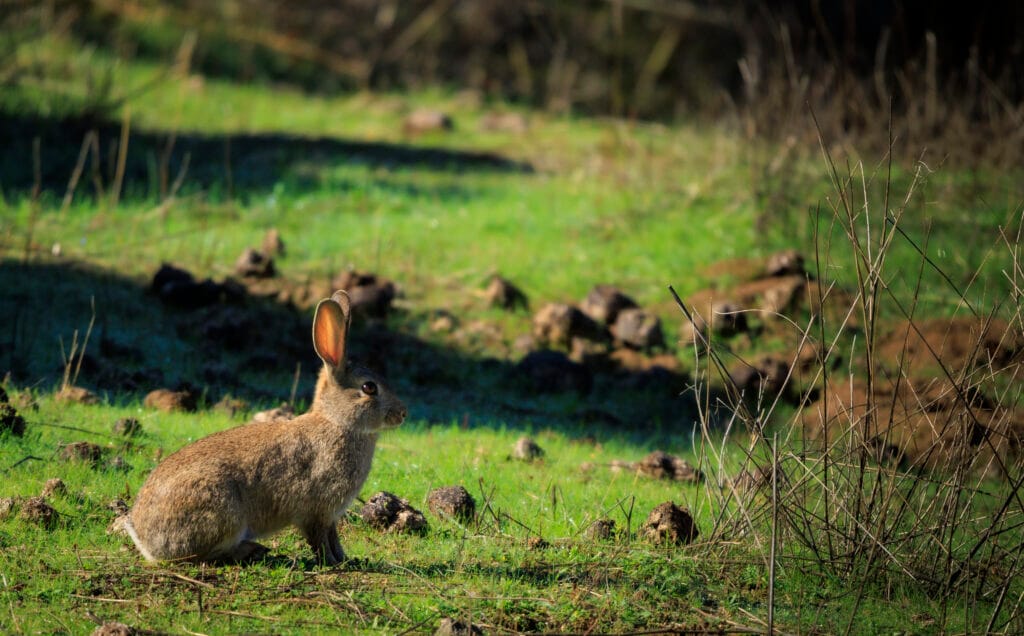
Lakkad Da Zone is one of the most picturesque and serene zones of Ranthambore National Park, Rajasthan. This zone is known for its dense forest cover, diverse wildlife, and historical significance. It is a prime location for tiger sightings, nature photography, and birdwatching, offering visitors an authentic and immersive wildlife experience.
Geography and Landscape 🌍
- Located in the heart of Ranthambore National Park.
- Characterized by thick woodlands, dry deciduous forests, and open grasslands.
- Home to rugged terrains, small hills, and water bodies, creating a rich ecosystem.
- Named “Lakkad Da” due to the presence of dense teak and other hardwood trees.
- Offers breathtaking views of the Aravalli hills and Ranthambore’s ancient ruins.
Wildlife in Lakkad Da Zone 🐅
Lakkad Da is a prime tiger territory and offers sightings of various wildlife species, including:
- Bengal Tigers – Frequently spotted in the dense forests and near water sources.
- Leopards – Occasionally seen lurking in the rocky outcrops.
- Sloth Bears – Roaming around in search of food.
- Indian Gaur (Bison) – Seen grazing in the open meadows.
- Spotted Deer, Sambar Deer, and Nilgai (Blue Bull) – Providing ample prey for predators.
- Jackals, Foxes, and Wild Boars – Essential parts of the ecosystem.
Birdlife in Lakkad Da Zone 🦜
Lakkad Da is a paradise for birdwatchers, with over 200+ species of birds, including:
- Indian Eagle Owl & Crested Serpent Eagle – Commonly sighted raptors.
- Painted Storks & Black-headed Ibis – Found near water bodies.
- Peafowls, Parakeets, and Woodpeckers – Adding vibrant colors to the jungle.
- Kingfishers, Drongos, and Flycatchers – Perfect for bird photography.
- Migratory Birds – Sighted during the winter months.
Safari Experience in Lakkad Da Zone 🚙
- Morning Safari: 6:30 AM – 10:30 AM
- Evening Safari: 2:30 PM – 6:30 PM
Best Time to Visit Lakkad Da Zone 📅
- Summer (March – June): Ideal for tiger sightings near water sources.
- Winter (October – February): Best for birdwatching and pleasant safari experiences.
- Monsoon (July – September): Closed for visitors due to conservation efforts.
Accommodation and Activities Near Lakkad Da Zone 🏕️
There are numerous stay options near Ranthambore National Park, including:
- Luxury Resorts & Wildlife Lodges – For a comfortable and immersive stay.
- Forest Guesthouses & Eco-Lodges – Perfect for nature lovers.
- Budget Hotels & Homestays – Affordable options for all travelers.
Activities Near Lakkad Da Zone
- Wildlife Photography & Nature Walks – Capture breathtaking moments.
- Birdwatching Tours – Explore the rich avian diversity.
- Visit to Ranthambore Fort & Jogi Mahal – Experience history amidst wildlife.
- Interaction with Local Tribes & Villages – Discover Rajasthan’s rich culture.
- Eco-Tourism & Conservation Awareness Programs – Learn about wildlife protection.
How to Reach Lakkad Da Zone? 🚗
- By Air: Nearest airport – Jaipur International Airport (180 km).
- By Train: Nearest railway station – Sawai Madhopur (12 km).
- By Road: Well-connected to Jaipur, Delhi, and Kota via national highways.
Why Visit Lakkad Da Zone? ⭐
✔️ Ideal for tiger sightings and diverse wildlife encounters
✔️ Lush forests, scenic landscapes, and tranquil ambiance
✔️ Rich birdlife and unique flora make it a biodiversity hotspot
✔️ Close proximity to Ranthambore Fort and heritage sites
✔️ Multiple safari options for wildlife enthusiasts
Lakkad Da Zone offers a perfect blend of wilderness, adventure, and history, making it an unmissable destination for wildlife lovers. Book your safari today and explore the untamed beauty of Ranthambore! 🌿🐅
For safari bookings and further inquiries, visit our website or contact our help desk.
Rajbagh Zone – The Majestic Heart of Ranthambore National Park
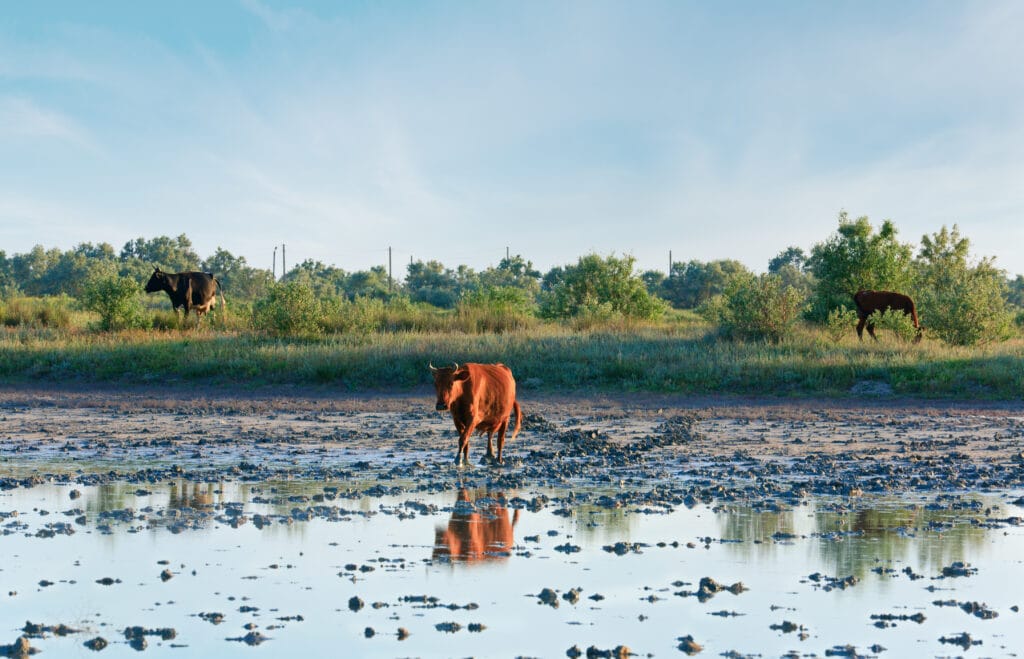
Rajbagh Zone, located in the core area of Ranthambore National Park, Rajasthan, is one of the most picturesque and wildlife-rich zones in the park. Famous for its stunning ruins, scenic Rajbagh Lake, and frequent tiger sightings, this zone is a paradise for nature lovers and photographers.
Geography and Landscape 🌍
- Dominated by the serene Rajbagh Lake, a major attraction for wildlife.
- Surrounded by ruined structures, arches, and old palaces, adding to its historical charm.
- Characterized by dense dry deciduous forests, open meadows, and rocky outcrops.
- Offers a majestic backdrop of the Aravalli Hills, making it a scenic safari experience.
- Waterholes and lakes attract a large variety of animals, especially during summer.
Wildlife in Rajbagh Zone 🐅
Rajbagh Zone is one of the best places to spot the Bengal Tiger in Ranthambore. Other notable wildlife includes:
- Bengal Tigers – Frequently sighted near Rajbagh Lake and open grasslands.
- Leopards – Occasionally spotted in rocky terrains.
- Sloth Bears – Found foraging in the forested areas.
- Sambar Deer, Spotted Deer, and Nilgai – Abundant across the zone.
- Marsh Crocodiles – Seen basking near the lake.
- Wild Boars and Jackals – Commonly seen near water sources.
Birdlife in Rajbagh Zone 🦜
A paradise for birdwatchers, Rajbagh Zone is home to a wide variety of birds:
- Painted Storks & Egrets – Found near Rajbagh Lake.
- Kingfishers, Herons, and Cormorants – Frequently sighted around water bodies.
- Crested Serpent Eagle & Changeable Hawk-Eagle – Apex aerial predators.
- Peafowls, Parakeets, and Drongos – Adding vibrance to the jungle.
- Owls and Vultures – Found roosting in ruins and trees.
Safari Experience in Rajbagh Zone 🚙
- Morning Safari: 6:30 AM – 10:30 AM
- Evening Safari: 2:30 PM – 6:00 PM
Best Time to Visit Rajbagh Zone 📅
- Summer (March – June): Best for tiger sightings near water sources.
- Winter (November – February): Ideal for comfortable safaris and birdwatching.
- Monsoon (July – September): Closed for safaris due to conservation measures.
Accommodation and Activities Near Rajbagh Zone 🏕️
There are multiple stay options available for tourists visiting Rajbagh Zone:
- Luxury Resorts & Jungle Lodges – Offering premium jungle-view rooms.
- Heritage Hotels & Eco-Lodges – Combining history with nature.
- Budget Homestays & Guest Houses – Affordable and comfortable stays.
Activities Near Rajbagh Zone
- Wildlife Photography & Jungle Safari – Capture majestic tigers and stunning landscapes.
- Birdwatching Tours – Spot rare and migratory birds.
- Fort Exploration – Visit the historic Ranthambore Fort nearby.
- Cultural & Village Tours – Experience Rajasthan’s rich heritage.
- Nature Walks & Eco-Tourism Activities – Learn about conservation efforts.
How to Reach Rajbagh Zone? 🚗
- By Air: Nearest airport – Jaipur International Airport (180 km).
- By Train: Nearest railway station – Sawai Madhopur (10 km).
- By Road: Well-connected via NH-552, accessible from major cities like Jaipur and Delhi.
Why Visit Rajbagh Zone? ⭐
✔️ One of the most scenic zones in Ranthambore 🏞️ ✔️ High chances of tiger sightings near Rajbagh Lake 🐅 ✔️ Rich birdlife and diverse wildlife species 🦜 ✔️ Historic ruins offering a unique jungle experience 🏰 ✔️ Easily accessible from major travel hubs 🚆
Rajbagh Zone is an unmissable part of Ranthambore National Park, offering a perfect blend of history, wildlife, and natural beauty. Plan your safari today and experience the thrill of the wild! 🌿🐅
For safari bookings and more details, visit our website or contact our help desk.
Jogi Mahal Zone – A Scenic and Wildlife-Rich Safari Experience
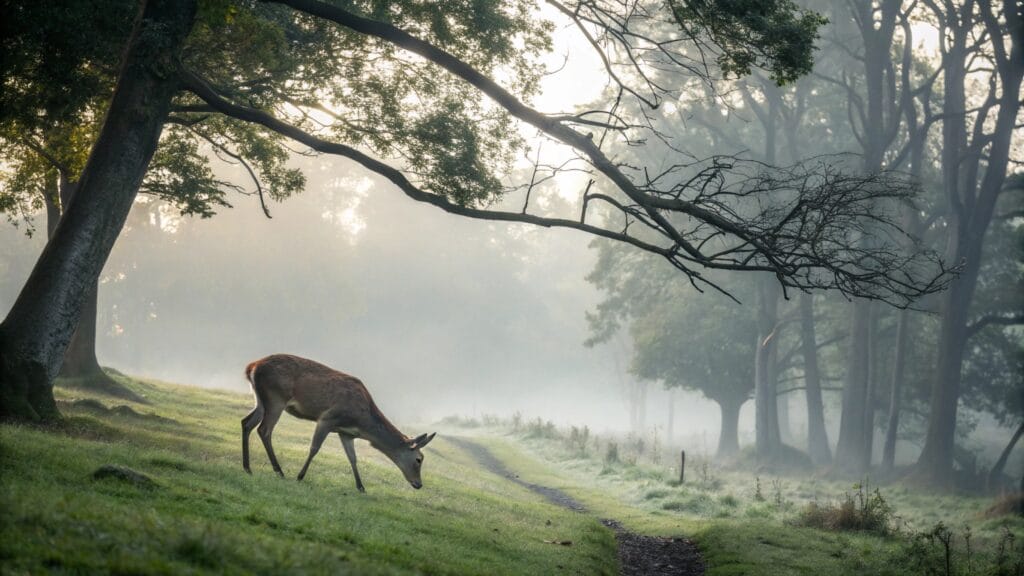
Jogi Mahal Zone is one of the most picturesque zones in Ranthambore National Park, Rajasthan. Named after the historic Jogi Mahal, this zone is known for its stunning landscapes, rich wildlife, and breathtaking views of Padam Talao Lake. A visit to this zone offers a perfect blend of history, nature, and thrilling wildlife encounters.
Geography and Landscape 🌍
- Located near the Padam Talao Lake, offering scenic views.
- Home to dense dry deciduous forests, grasslands, and rocky terrains.
- Features the famous Jogi Mahal, a historic rest house near the lake.
- Rolling hills and natural water sources create an ideal habitat for wildlife.
- A hotspot for stunning sunrise and sunset views, making it a favorite among photographers.
Wildlife in Jogi Mahal Zone 🐅
This zone is well-known for frequent wildlife sightings, including:
- Bengal Tigers – A prime area for spotting tigers in their natural habitat.
- Leopards – Occasionally seen on rocky outcrops and dense forest trails.
- Sloth Bears – Known to forage near Jogi Mahal and water sources.
- Sambar Deer, Chital (Spotted Deer), and Nilgai – Common prey species for predators.
- Wild Boars and Indian Gazelles (Chinkara) – Frequently sighted across the zone.
Birdlife in Jogi Mahal Zone 🦜
Jogi Mahal Zone is a paradise for birdwatchers, with species such as:
- Painted Storks & Woolly-necked Storks – Often seen near Padam Talao.
- Kingfishers & Egrets – Found around water bodies.
- Peafowls, Indian Rollers & Parakeets – Adding vibrant colors to the landscape.
- Crested Serpent Eagles & Owls – Dominating the skies of Ranthambore.
Safari Experience in Jogi Mahal Zone 🚙
- Morning Safari: 6:30 AM – 10:00 AM
- Evening Safari: 2:30 PM – 6:00 PM
Best Time to Visit Jogi Mahal Zone 📅
- Summer (April – June): Best for tiger sightings near water bodies.
- Winter (November – February): Pleasant weather, ideal for safaris and birdwatching.
- Monsoon (July – September): Closed for safaris due to heavy rains and breeding season.
Accommodation and Activities Near Jogi Mahal Zone 🏕️
Stay Options:
- Luxury Resorts & Heritage Hotels – Offer premium jungle experiences.
- Forest Rest Houses & Eco-Lodges – Perfect for nature lovers.
- Budget Hotels & Homestays – Affordable stay options near the park.
Things to Do Near Jogi Mahal Zone:
- Visit Jogi Mahal – A historic structure offering scenic views of Padam Talao.
- Jungle Safari & Wildlife Photography – Capture the best wildlife moments.
- Nature Walks & Birdwatching – Explore the park’s rich biodiversity.
- Explore Ranthambore Fort – A UNESCO heritage site near the park.
- Local Village Tours – Experience Rajasthani culture and traditions.
How to Reach Jogi Mahal Zone? 🚗
- By Air: Nearest airport – Jaipur International Airport (180 km).
- By Train: Nearest railway station – Sawai Madhopur Junction (10 km).
- By Road: Well-connected to Jaipur, Kota, and Delhi via national highways.
Why Visit Jogi Mahal Zone? ⭐
✔️ Stunning landscapes with historic and natural beauty
✔️ Prime tiger sighting zone with diverse wildlife
✔️ Home to Padam Talao and the famous Jogi Mahal
✔️ Excellent birdwatching and photography opportunities
✔️ Rich history combined with thrilling jungle safaris
Jogi Mahal Zone is a must-visit for nature lovers, wildlife enthusiasts, and history buffs. Plan your safari and explore the wilderness of Ranthambore National Park! 🌿🐅
Singhdwar Zone – The Gateway to Ranthambore’s Wild Beauty

The Singhdwar Zone is a prime entry point to Ranthambore National Park, offering a diverse landscape, excellent tiger sightings, and a rich biodiversity. As one of the most sought-after safari zones, it provides a thrilling wildlife experience in the heart of Rajasthan’s wilderness. This zone is a must-visit for photographers, nature lovers, and adventure seekers.
Geography and Landscape 🌍
- Located in the Ranthambore National Park core area.
- Features rocky cliffs, dense dry deciduous forests, and open grasslands.
- Home to the famous Ranthambore Fort, adding historical significance.
- Includes several water bodies, crucial for sustaining wildlife.
- The landscape offers stunning sunrise and sunset views.
Wildlife in Singhdwar Zone 🐅
Singhdwar is known for its high density of tigers and other wildlife species, including:
- Bengal Tigers – Frequently sighted along waterholes and open meadows.
- Leopards – Occasionally spotted near rocky outcrops.
- Sloth Bears – Seen searching for food among the dense foliage.
- Indian Gaur (Bison) – Roaming in herds across grasslands.
- Wild Boars, Sambar Deer, Spotted Deer, and Nilgai – Common prey species.
- Crocodiles – Found near water bodies within the zone.
Birdlife in Singhdwar Zone 🦜
Singhdwar is a paradise for birdwatchers, boasting over 250 bird species, including:
- Crested Serpent Eagle & Indian Scops Owl – Common raptors in the zone.
- Painted Stork & Woolly-necked Stork – Often found near water bodies.
- Kingfishers, Bee-eaters & Parakeets – Adding vibrant colors to the jungle.
- Peafowls, Hornbills & Woodpeckers – Easily spotted across the forest.
Safari Experience in Singhdwar Zone 🚙
- Morning Safari: 6:30 AM – 10:30 AM
- Evening Safari: 2:30 PM – 6:30 PM
Best Time to Visit Singhdwar Zone 📅
- Summer (March – June): Best for tiger sightings near waterholes.
- Winter (October – February): Pleasant weather, ideal for safaris and birdwatching.
- Monsoon (July – September): Closed for safaris due to conservation efforts.
Accommodation and Activities Near Singhdwar Zone 🏕️
- Luxury Wildlife Resorts – Premium stays with top-class amenities.
- Forest Lodges & Eco-Lodges – Authentic jungle experiences.
- Budget Hotels & Homestays – Affordable stays near the park.
Activities Near Singhdwar Zone
- Jungle Safari & Wildlife Photography – Perfect for capturing stunning wildlife moments.
- Birdwatching & Nature Walks – Explore the diverse birdlife.
- Ranthambore Fort Visit – Discover the historical grandeur within the park.
- Village Tours & Cultural Experiences – Experience Rajasthan’s local heritage.
How to Reach Singhdwar Zone? 🚗
- By Air: Nearest airport – Jaipur International Airport (180 km).
- By Train: Nearest railway station – Sawai Madhopur (12 km).
- By Road: Well-connected to Jaipur, Kota, and Delhi via national highways.
Why Visit Singhdwar Zone? ⭐
✔️ High chances of tiger sightings in their natural habitat
✔️ Scenic landscapes with historic Ranthambore Fort
✔️ Diverse wildlife, including leopards and sloth bears
✔️ Excellent birdwatching opportunities
✔️ Easily accessible with multiple safari options
Singhdwar Zone offers an unparalleled jungle adventure, making it a must-visit for wildlife enthusiasts. Plan your safari today and experience the magic of Ranthambore! 🌿🐅
Buffer Zones
Aantri Zone – A Hidden Gem of Ranthambore National Park
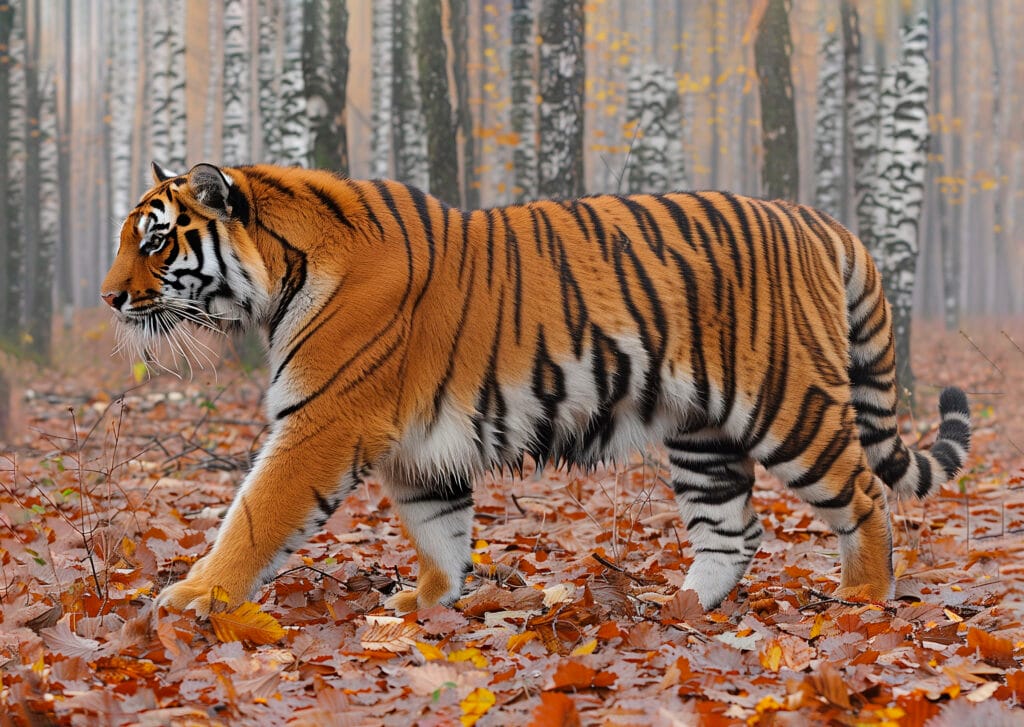
Aantri Zone is one of the lesser-explored yet rewarding zones of Ranthambore National Park, Rajasthan. This zone offers an unspoiled wilderness experience, featuring dense forests, scenic landscapes, and an abundance of wildlife. It is an ideal destination for wildlife enthusiasts, photographers, and nature lovers looking for a serene safari experience.
Geography and Landscape 🌍
- Located in the buffer zone of Ranthambore National Park.
- Characterized by dry deciduous forests, rocky outcrops, and open grasslands.
- Features small water bodies and seasonal streams, essential for wildlife sustenance.
- Home to rugged terrains and hilly landscapes, offering breathtaking views.
- Less crowded compared to core zones, providing a peaceful wildlife experience.
Wildlife in Aantri Zone 🐅
Although not as famous as core zones, Aantri is home to a diverse range of wildlife:
- Royal Bengal Tigers – Occasional sightings, especially near water sources.
- Leopards – Frequently spotted in the rocky terrains.
- Sloth Bears – Seen foraging for food in forested areas.
- Hyenas & Jackals – Common scavengers of the zone.
- Sambar Deer, Spotted Deer & Nilgai – Major herbivores grazing in open meadows.
- Wild Boars & Indian Porcupines – Often found near forest edges.
Birdlife in Aantri Zone 🦜
Aantri Zone is a paradise for birdwatchers, with numerous avian species such as:
- Indian Vultures & Crested Serpent Eagles – Soaring over the landscapes.
- Painted Storks & White-breasted Kingfishers – Near water bodies.
- Peacocks, Drongos & Parakeets – Adding vibrant colors to the jungle.
- Owls & Woodpeckers – Commonly sighted in wooded areas.
Safari Experience in Aantri Zone 🚙
- Morning Safari: 6:00 AM – 10:30 AM
- Evening Safari: 2:30 PM – 6:30 PM
Best Time to Visit Aantri Zone 📅
- Summer (March – June): Best for wildlife sightings near waterholes.
- Winter (November – February): Pleasant weather, ideal for birdwatching and photography.
- Monsoon (July – September): Closed for safaris due to park regulations.
Accommodation and Activities Near Aantri Zone 🏕️
Several stay options are available near Ranthambore National Park:
- Luxury Resorts & Jungle Lodges – Premium stays for a comfortable experience.
- Forest Rest Houses & Eco-Lodges – Ideal for an immersive jungle stay.
- Budget Hotels & Homestays – Affordable and convenient options.
Activities Near Aantri Zone
- Jungle Safari & Wildlife Photography – Capture the raw beauty of the wilderness.
- Birdwatching Tours – Spot rare and migratory bird species.
- Nature Walks & Village Tours – Explore the rural side of Rajasthan.
- Ranthambore Fort Visit – Discover the historic fort inside the park.
How to Reach Aantri Zone? 🚗
- By Air: Nearest airport – Jaipur International Airport (180 km).
- By Train: Nearest railway station – Sawai Madhopur (15 km).
- By Road: Well-connected to Jaipur, Delhi, and Kota via national highways.
Why Visit Aantri Zone? ⭐
✔️ Peaceful and less crowded safari experience
✔️ Diverse landscapes and rich biodiversity
✔️ Good chances of spotting leopards and sloth bears
✔️ Great for birdwatching and nature photography
✔️ Proximity to Ranthambore’s historical attractions
Aantri Zone is an offbeat yet rewarding destination within Ranthambore National Park, offering an intimate connection with nature. Plan your safari and explore the untouched beauty of Aantri! 🌿🐾
For safari bookings and more details, visit our website or contact our help desk.
Phalodi Zone – The Hidden Gem of Ranthambore
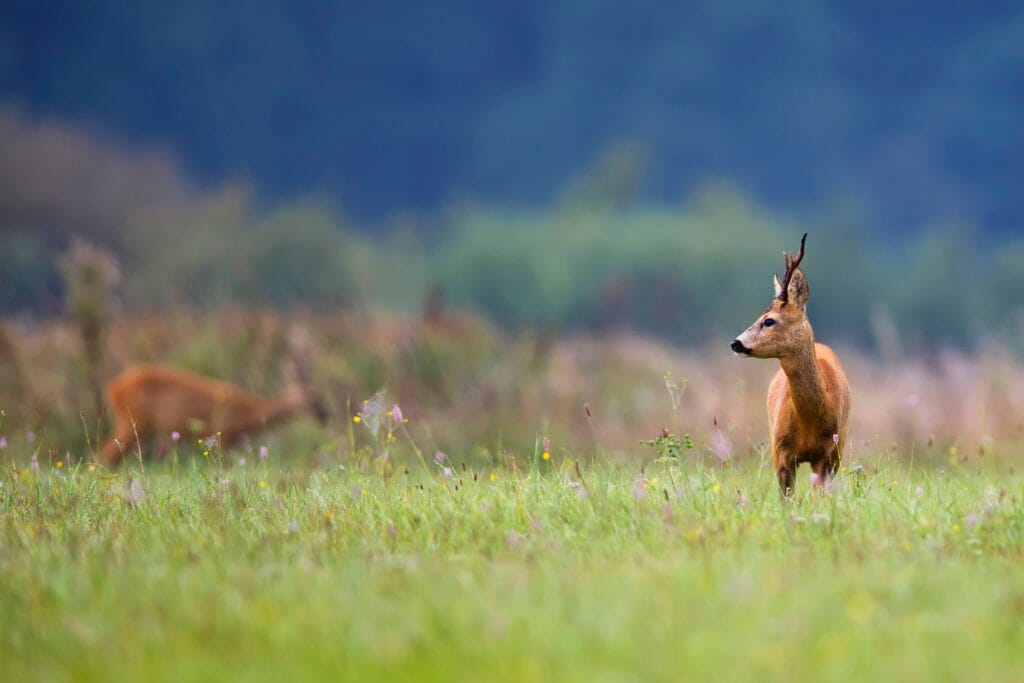
The Phalodi Zone of Ranthambore National Park is an offbeat safari region, known for its rugged landscapes, dense forests, and rich biodiversity. This zone offers a peaceful and immersive wildlife experience, with less crowding and high chances of spotting big cats. Its serene atmosphere makes it a favorite among wildlife photographers, birdwatchers, and nature lovers.
Geography and Landscape 🌿
- Situated in the buffer area of Ranthambore, offering undisturbed wildlife viewing.
- Characterized by dry deciduous forests, rocky outcrops, and grasslands, providing a diverse ecosystem.
- Contains natural waterholes, attracting a variety of wild animals throughout the year.
- Surrounded by hilly terrain and ancient ruins, adding a historical touch to the safari experience.
Wildlife in Phalodi Zone 🐅
Phalodi Zone is home to a wide range of wildlife species, including:
- Royal Bengal Tigers – Frequent sightings near waterholes and dense foliage.
- Leopards – Often seen in rocky cliffs and secluded areas.
- Sloth Bears – Commonly found foraging for termites and berries.
- Striped Hyenas – Occasionally spotted during early morning or late evening safaris.
- Sambar Deer, Spotted Deer & Nilgai – Prey species for predators.
- Jackals, Wild Boars & Indian Foxes – Adding to the predator-prey dynamics.
Birdlife in Phalodi Zone 🦜
With over 200 bird species, Phalodi is a great birdwatching destination:
- Indian Eagle-Owl & Brown Fish Owl – Found in rocky outcrops.
- Crested Serpent Eagle & Shikra – Common raptors in the area.
- Peafowls, Parakeets & Woodpeckers – Adding vibrant colors to the jungle.
- Kingfishers, Drongos & Bee-eaters – Seen near waterholes and open clearings.
Safari Experience in Phalodi Zone 🚙
- Morning Safari: 6:30 AM – 10:30 AM
- Evening Safari: 2:30 PM – 6:30 PM
Best Time to Visit Phalodi Zone 📅
- Summer (March – June): Best time for tiger sightings as animals gather near water sources.
- Winter (October – February): Pleasant weather, great for photography and birdwatching.
- Monsoon (July – September): Closed for safaris due to heavy rainfall and park conservation measures.
Accommodation and Activities Near Phalodi Zone 🏡
There are multiple stay options near Phalodi, ranging from luxury resorts to budget homestays:
- Luxury Jungle Resorts – Premium accommodations with modern amenities.
- Eco-Lodges & Forest Guest Houses – Perfect for nature lovers seeking an authentic jungle stay.
- Budget Hotels & Homestays – Affordable options for travelers.
Activities Near Phalodi Zone
- Jungle Safari & Wildlife Photography – Capture stunning images of tigers and other wildlife.
- Birdwatching & Nature Walks – Discover rare species and explore the forest on foot.
- Ranthambore Fort Visit – Explore the historic ruins overlooking the park.
- Village Tours & Cultural Experiences – Learn about the traditions of local communities.
How to Reach Phalodi Zone? 🚗
- By Air: Nearest airport – Jaipur International Airport (180 km).
- By Train: Nearest railway station – Sawai Madhopur Junction (15 km).
- By Road: Well-connected via national highways from Jaipur, Delhi, and Kota.
Why Visit Phalodi Zone? ✨
✔️ Less crowded than other safari zones, offering a peaceful experience
✔️ Good chances of spotting tigers and leopards
✔️ Diverse landscapes with rich flora and fauna
✔️ Ideal for photography, birdwatching, and nature lovers
Phalodi Zone is a hidden treasure of Ranthambore, offering a unique blend of wilderness, history, and adventure. Book your safari today and explore the untouched beauty of this incredible zone! 🌿🐅
Balas Zone – A Hidden Jewel of Ranthambore National Park
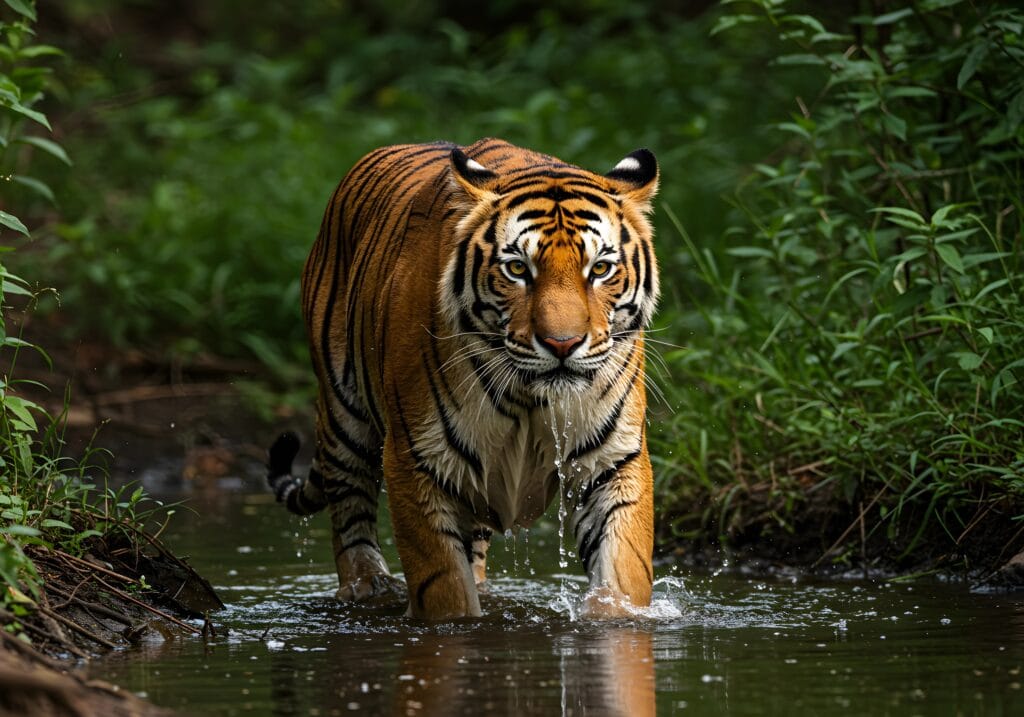
The Balas Zone of Ranthambore National Park is a lesser-known yet breathtaking safari region, offering diverse landscapes, dense forests, and abundant wildlife. Known for its tranquility and raw wilderness, Balas is a perfect destination for wildlife photographers, nature lovers, and adventure seekers looking for an offbeat safari experience.
Geography and Landscape 🌿
- Located in the buffer zone of Ranthambore, providing an unspoiled natural habitat for wildlife.
- Features a mix of dry deciduous forests, rocky hills, and water sources, ensuring a thriving ecosystem.
- The region is less crowded, offering a peaceful and immersive wildlife experience.
- Home to seasonal waterholes, which attract a variety of wild animals, especially during summers.
Wildlife in Balas Zone 🐅
Balas Zone is rich in wildlife, providing a high chance of sighting various species, including:
- Bengal Tigers – Occasionally spotted roaming near waterholes and grasslands.
- Leopards – Known for their elusive nature, often seen in rocky terrains.
- Sloth Bears – Commonly found foraging in the dense forested patches.
- Sambar Deer, Chital, and Nilgai (Blue Bull) – Frequently seen grazing in open areas.
- Jackals, Hyenas, and Wild Boars – Adding to the biodiversity of the zone.
Birdlife in Balas Zone 🦜
Balas is a paradise for birdwatchers, featuring a variety of resident and migratory birds:
- Peacocks & Parakeets – Commonly seen across the zone.
- Eagles & Owls – Frequently sighted in rocky outcrops and tree canopies.
- Kingfishers & Egrets – Found near waterholes and seasonal streams.
- Indian Vultures & Kestrels – Circling above the terrain in search of prey.
Safari Experience in Balas Zone 🚙
- Morning Safari: 6:00 AM – 10:00 AM
- Evening Safari: 2:30 PM – 6:30 PM
- Vehicle Options: Open Gypsy jeeps (max. 6 passengers) with trained guides.
- Safari Booking: Available via online portals or on-site reservations.
Best Time to Visit Balas Zone 📅
- Summer (March – June): Ideal for wildlife sightings near water sources.
- Winter (November – February): Perfect for birdwatching and comfortable safaris.
- Monsoon (July – September): Limited access due to park regulations.
Accommodation and Activities Near Balas Zone 🏕️
Visitors can find various stay options near Ranthambore, including:
- Luxury Resorts & Jungle Lodges – Perfect for a premium wildlife retreat.
- Eco-Lodges & Tented Camps – Ideal for nature lovers seeking an immersive experience.
- Budget Hotels & Guesthouses – Affordable options for travelers.
Activities Near Balas Zone
- Wildlife Safaris & Photography – Capture the beauty of nature and wildlife.
- Birdwatching Tours – Spot rare and exotic bird species.
- Nature Walks & Village Tours – Explore the local culture and traditions.
How to Reach Balas Zone? 🚗
- By Air: Nearest airport – Jaipur International Airport (180 km).
- By Train: Nearest railway station – Sawai Madhopur Junction (15 km).
- By Road: Well-connected via highways from Jaipur, Delhi, and Kota.
Why Visit Balas Zone? ⭐
✔️ Untouched, less-crowded safari experience
✔️ Diverse landscapes, from forests to rocky hills
✔️ Home to tigers, leopards, and sloth bears
✔️ Rich birdlife, perfect for birdwatching enthusiasts
✔️ Excellent for photography and peaceful nature retreats
The Balas Zone of Ranthambore National Park offers a unique and serene wildlife experience, making it a must-visit for those seeking adventure, tranquility, and nature’s wonders.
Chidikho Zone – A Hidden Gem in Ranthambore National Park
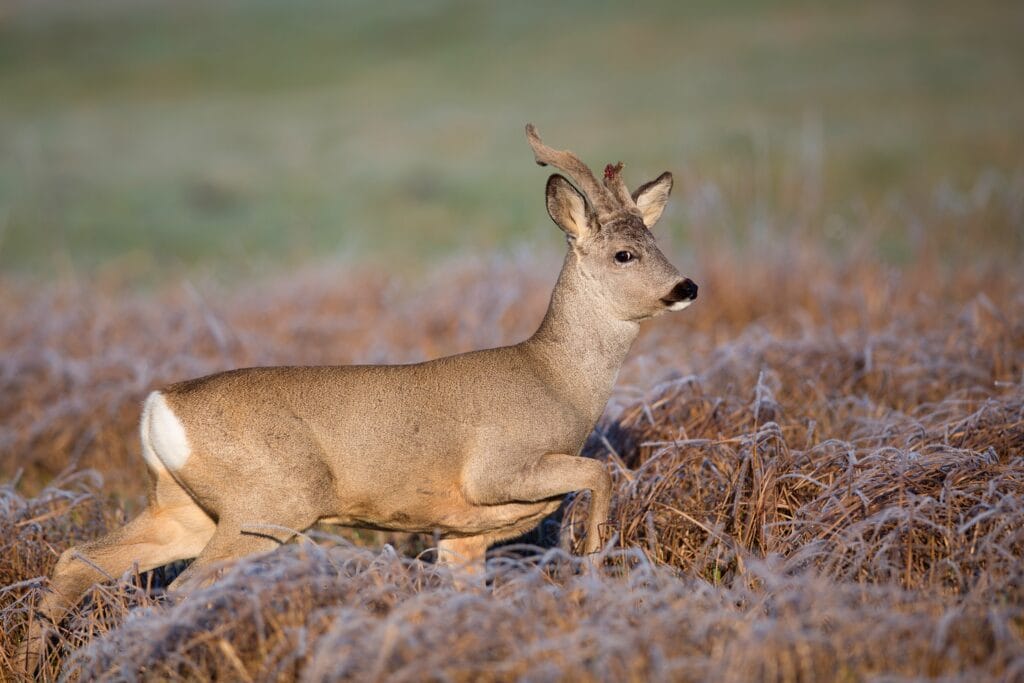
Chidikho Zone is one of the lesser-explored yet fascinating regions of Ranthambore National Park, offering a blend of dense forest cover, water bodies, and diverse wildlife. Known for its pristine landscapes and tranquil atmosphere, this zone is a haven for wildlife enthusiasts, nature lovers, and photographers.
Geography and Landscape 🌍
- Located within Ranthambore’s buffer area, offering a serene escape from the tourist-heavy zones.
- Rich in vegetation, featuring dry deciduous forests, grasslands, and rocky outcrops.
- Home to Chidikho Lake, which attracts a variety of wild animals and bird species.
- Undulating terrains with open meadows and dense woodlands make it an excellent wildlife habitat.
Wildlife in Chidikho Zone 🐅
This zone boasts an impressive variety of fauna, including:
- Bengal Tigers – Occasionally spotted near Chidikho Lake and rocky hillocks.
- Leopards – Elusive but found in the deeper forested areas.
- Sloth Bears – Frequently seen foraging for food.
- Sambar Deer, Spotted Deer, and Nilgai (Blue Bull) – Common herbivores in the region.
- Wild Boars and Jackals – Adding to the park’s diverse ecosystem.
Birdlife in Chidikho Zone 🦜
Birdwatchers will find Chidikho to be a hidden paradise, home to numerous resident and migratory birds:
- Indian Peafowl & Parakeets – Commonly seen along the forest trails.
- Crested Serpent Eagle & Shikra – Raptors soaring above the landscape.
- Kingfishers & Egrets – Found around Chidikho Lake.
- Owls & Woodpeckers – Nesting in the dense tree canopies.
Safari Experience in Chidikho Zone 🚙
- Morning Safari: 6:00 AM – 10:00 AM
- Evening Safari: 2:30 PM – 6:30 PM
- Vehicle Options: Open Gypsy jeeps (max. 6 passengers) with trained guides.
- Safari Booking: Available via online portals or on-site reservations.
Best Time to Visit Chidikho Zone 📅
- Summer (March – June): Best for wildlife sightings near water sources.
- Winter (November – February): Comfortable weather, ideal for safaris and birdwatching.
- Monsoon (July – September): Limited access due to conservation efforts.
Accommodation and Activities Near Chidikho Zone 🏕️
Visitors can find various stay options near Ranthambore, ranging from:
- Luxury Wildlife Resorts – Premium accommodations with top-class amenities.
- Eco-Lodges & Jungle Camps – Perfect for nature lovers seeking a rustic experience.
- Budget Hotels & Homestays – Affordable stays for wildlife enthusiasts.
Activities Near Chidikho Zone
- Wildlife Safaris & Photography – Capture stunning shots of nature and wildlife.
- Birdwatching Tours – Discover unique avian species in their natural habitat.
- Nature Walks & Cultural Tours – Explore local traditions and Ranthambore’s rich history.
How to Reach Chidikho Zone? 🚗
- By Air: Nearest airport – Jaipur International Airport (180 km).
- By Train: Nearest railway station – Sawai Madhopur Junction (15 km).
- By Road: Well-connected to Jaipur, Delhi, and Kota via national highways.
Why Visit Chidikho Zone? ⭐
✔️ Less crowded, offering a peaceful wildlife experience
✔️ Diverse landscapes, from lakes to dense forests
✔️ Home to tigers, leopards, and a variety of birds
✔️ Ideal for photographers, birdwatchers, and nature lovers
✔️ Easy accessibility from Ranthambore’s main entry points
Chidikho Zone provides a unique and tranquil safari experience, making it a must-visit for those seeking undisturbed wilderness and breathtaking biodiversity.
Kundal Zone – The Hidden Gem of Ranthambore National Park
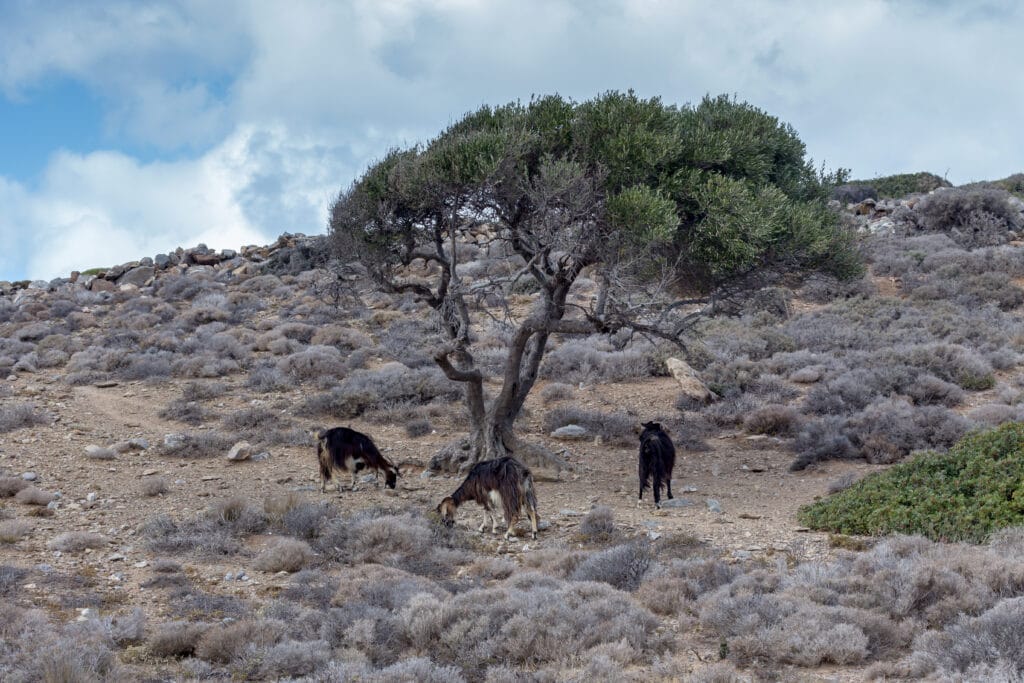
Kundal Zone is one of the lesser-explored yet equally mesmerizing zones of Ranthambore National Park, Rajasthan. Nestled deep within the park, this zone offers a pristine wilderness experience with breathtaking landscapes, diverse wildlife, and a tranquil environment. A paradise for wildlife enthusiasts and photographers, Kundal provides a unique opportunity to explore untouched natural beauty away from the usual tourist crowd.
Geography and Landscape 🌍
- Situated in the southern part of Ranthambore National Park.
- Features rugged terrains, dry deciduous forests, and open grasslands.
- Known for its picturesque valleys and seasonal streams.
- Offers stunning panoramic views, ideal for nature lovers and photographers.
- Home to ancient ruins and scattered water bodies that attract wildlife.
Wildlife in Kundal Zone 🐅
Kundal is home to a variety of fascinating wildlife, making it an exciting destination for safari-goers:
- Bengal Tigers – Often spotted near water bodies and rocky outcrops.
- Leopards – Frequently seen lurking in dense vegetation.
- Sloth Bears – Occasionally sighted foraging in the forest.
- Sambar Deer, Chital (Spotted Deer), and Nilgai (Blue Bull) – Common herbivores in the zone.
- Indian Wild Boar and Jungle Cats – Adding to the rich biodiversity.
- Monitor Lizards and Marsh Crocodiles – Found near water sources.
Birdlife in Kundal Zone 🦜
Birdwatchers will find Kundal an absolute delight with its impressive avian diversity:
- Indian Pitta & Paradise Flycatcher – Brightly colored beauties.
- Crested Serpent Eagle & Bonelli’s Eagle – Dominant raptors of the zone.
- Painted Storks & Woolly-necked Storks – Common near wetland areas.
- Owls, Woodpeckers, and Peafowls – Easily spotted throughout the zone.
- Kingfishers & Bee-eaters – Adding vibrancy to the landscape.
Safari Experience in Kundal Zone 🚙
- Morning Safari: 6:00 AM – 10:30 AM
- Evening Safari: 2:30 PM – 6:30 PM
Best Time to Visit Kundal Zone 📅
- Summer (March – June): Best for spotting tigers near water sources.
- Winter (October – February): Ideal weather for safaris and birdwatching.
- Monsoon (July – September): Closed for safaris due to conservation efforts.
Accommodation and Activities Near Kundal Zone 🏕️
Kundal offers a range of accommodation options to suit every budget:
- Luxury Wildlife Resorts – Premium stays with jungle-view suites.
- Eco-Lodges & Forest Guesthouses – Authentic wildlife experience.
- Budget Hotels & Homestays – Affordable and comfortable options.
Activities Near Kundal Zone
- Wildlife Safari & Photography – Capture the beauty of tigers and other wildlife.
- Birdwatching Excursions – Spot rare and migratory bird species.
- Guided Nature Walks & Village Tours – Explore the local culture and tribal heritage.
- Visit to Ranthambore Fort – Discover historical landmarks near the park.
- Star Gazing & Night Trails – Experience the jungle after dark.
How to Reach Kundal Zone? 🚗
- By Air: Nearest airport – Jaipur International Airport (180 km).
- By Train: Nearest railway station – Sawai Madhopur (14 km).
- By Road: Well-connected to Jaipur, Delhi, and Kota via national highways.
Why Visit Kundal Zone? ⭐
✔️ A less-crowded zone offering an exclusive jungle experience
✔️ One of the best places for tiger sightings and leopards
✔️ Spectacular landscapes with valleys, hills, and seasonal rivers
✔️ Rich biodiversity and exceptional birdwatching opportunities
✔️ Ideal for photography, nature exploration, and adventure seekers
Kundal Zone is a hidden treasure in Ranthambore, offering an offbeat and unforgettable wildlife experience. Whether you’re a wildlife enthusiast, nature lover, or photographer, Kundal Zone guarantees thrilling jungle safaris and breathtaking encounters with nature. Book your safari today and explore the wild beauty of Ranthambore! 🌿🐅
For safari bookings and more details, visit our website or contact our help desk.